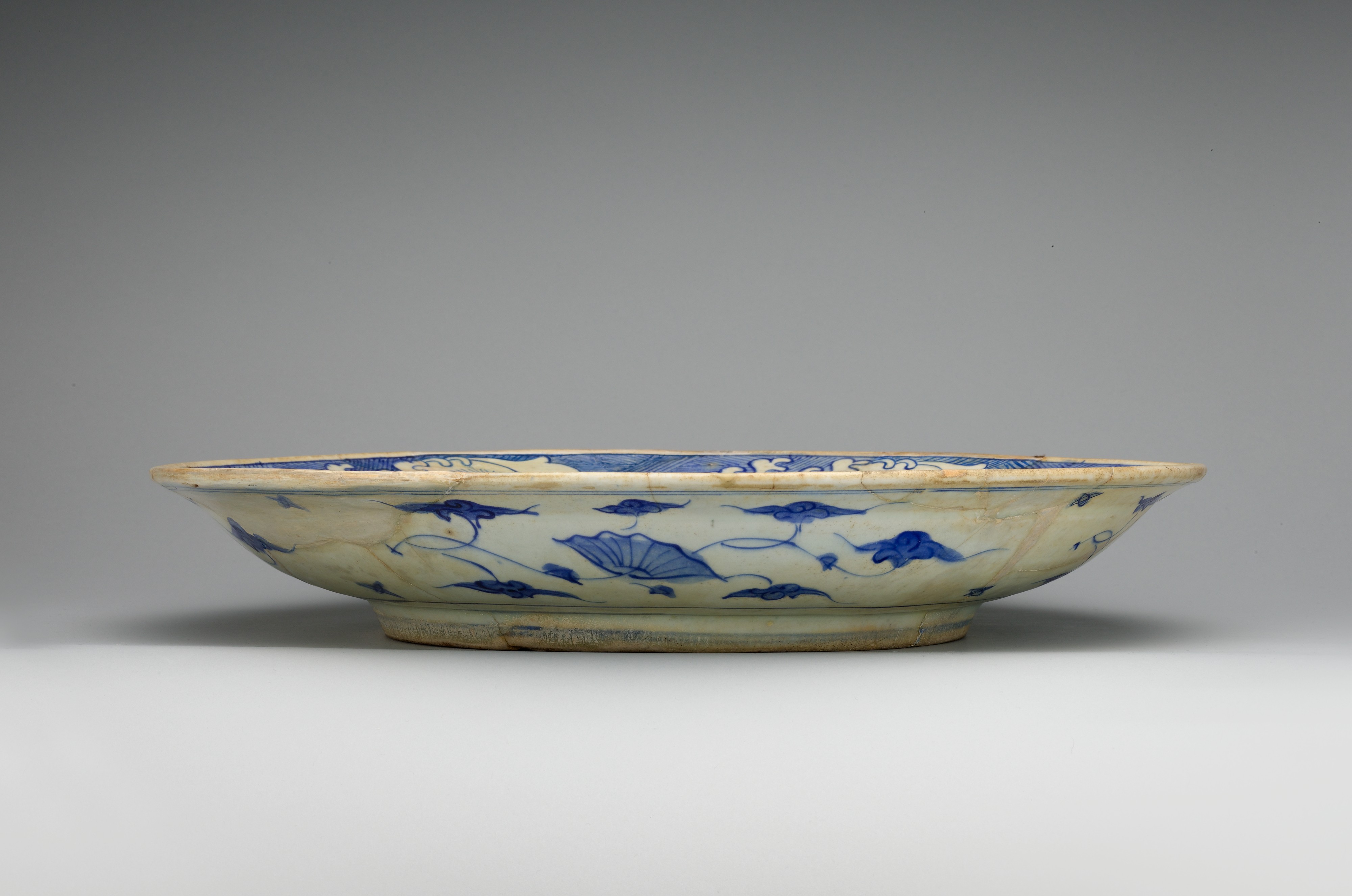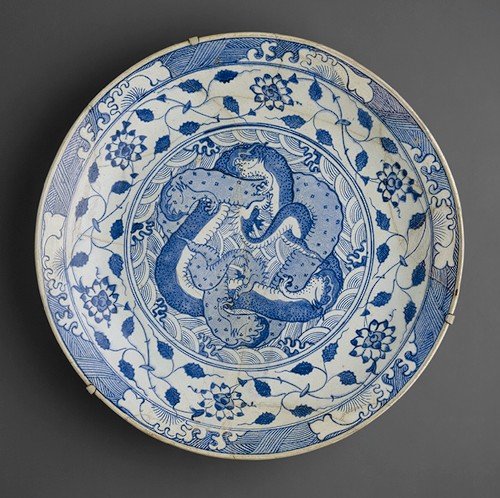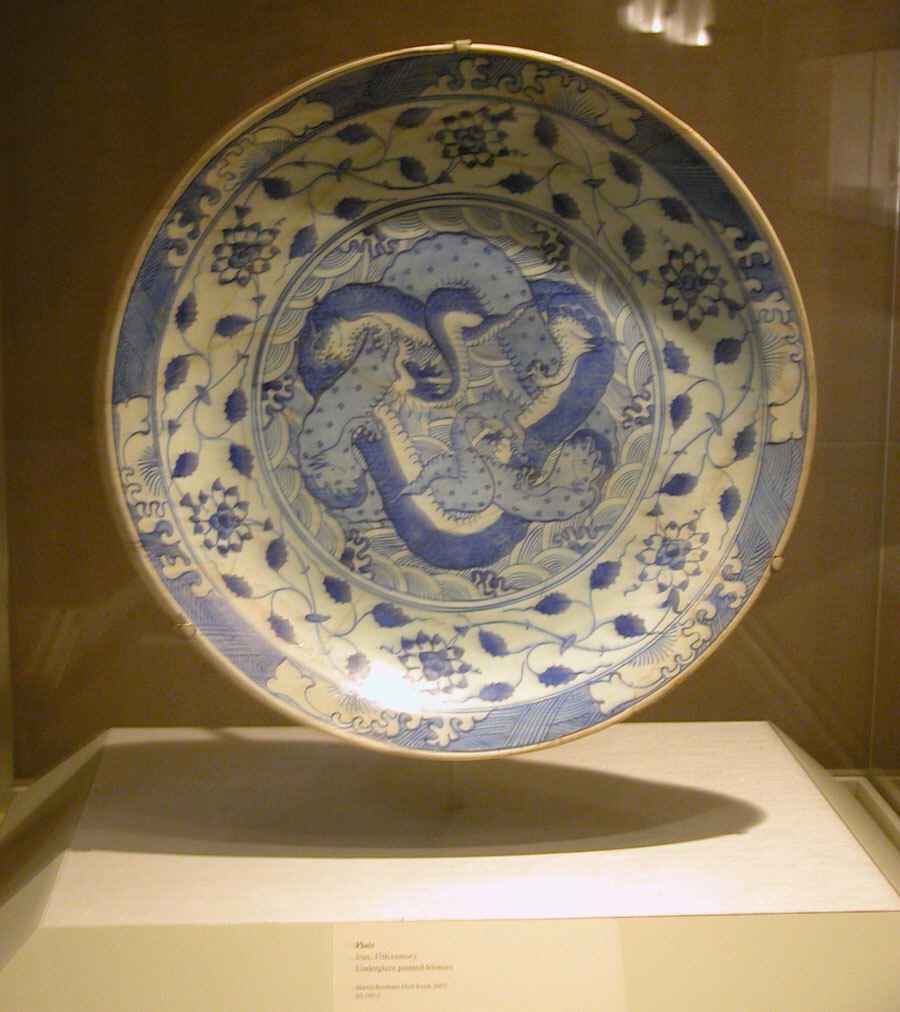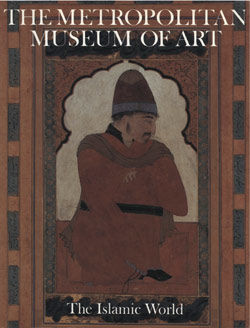Dish with Two Intertwined Dragons
Although Chinese blue-and-white porcelain had exerted a strong influence on ceramic production of the Islamic Near East since the fourteenth century, this phenomenon entered a new phase in the seventeenth century, as Persian ceramicists responded to the taste in Safavid Iran and abroad for Chinese export porcelain, known as Kraak ware.
The designs on this large dish adapt elements of Chinese blue-and-white porcelain of various dates. The center of the dish is densely ornamented with two entwined dragons, one light blue and the other dark blue with a white underbelly, grappling with each other against a concentric wave pattern. The cavetto zone surrounds this scene with a band of lotus flowers linked by delicately scrolling vines and leaves. The rim bears a reserve-painted wave-and-rock pattern and the exterior is decorated with scrolls of wispy and fanlike floral forms. On the foot of the dish is a "tassel mark" in imitation of a Chinese reign mark, or nien-hao. Similar marks are found on other bowls attributed to seventeenth-century Iran.
Due to rights restrictions, this image cannot be enlarged, viewed at full screen, or downloaded.
This artwork is meant to be viewed from right to left. Scroll left to view more.








